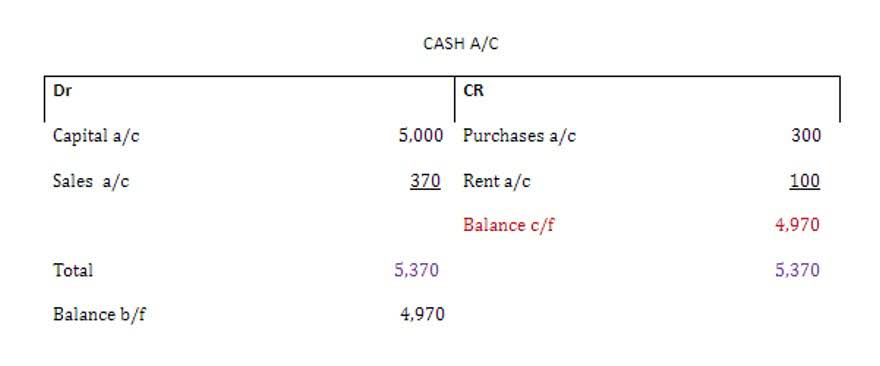Change in Net Working Capital NWC Explained

By using changes in working capital in conjunction with other financial metrics, companies can make more informed decisions about cash management, operations, taking out working capital loans and investments. Positive changes in working capital occur when current assets increase more than current liabilities, resulting in an increase in the net cash position. A company with a high level of working capital typically possesses substantial current assets relative to its current liabilities. Conversely, a low working capital position suggests that the business faces significant current liabilities compared to its current assets.

How to Find Change in NWC on Cash Flow Statement (CFS)
- In this tutorial, you’ll learn about Working Capital and the Change in Working Capital in valuations and financial models – what they mean, how to project these items, and how to check your work.
- Besides this, you will be able to sell products to your customers at a discount.
- Because with better working capital management, you’ll find your business better equipped to negotiate.
- A working capital ratio of less than 1.0 can suggest potential future liquidity problems.
- Working capital is the amount of liquid assets a company has available, after accounting for its upcoming payments.
- Exactly how much net working capital a healthy company should maintain will vary from company to company, dictated by its operating model, industry, and capital structure.
A boost in cash flow and working capital might not be good if the company is taking on long-term debt that doesn’t generate enough cash flow to pay it off. Conversely, a large decrease in cash flow and working capital might not be so bad if the company is using the proceeds to invest in long-term fixed assets that will generate earnings in the years to come. For instance, suppose a company’s accounts receivables (A/R) balance has increased YoY, while its accounts payable (A/P) balance has increased under the same time span. As a business, your aim is to reduce an increase in the Net Working Capital. This is because an increase in the Net Working Capital would mean additional funds needed to finance the increased current assets. Also, such businesses make payments toward outstanding expenses using cash.

Improve Inventory Management

Investing more money in stock means keeping your cash idle and not putting it to use. Therefore, this results in decreased liquidity and makes your business less competitive. This is an obvious step to change the Net Working Capital of your business.
How is net working capital calculated?
If the company’s Inventory increases from $200 to $300, it needs to spend $100 of cash to buy that additional Inventory. But Company A is in a stronger position because Deferred Revenue represents cash that it has collected for products and services that it has not yet delivered. The Change in Working Capital could positively or negatively affect a company’s valuation, depending on the company’s business model and market. Therefore, there might be significant differences between the “after-tax profits” a company records and the cash flow it generates from its business. But you can’t just look at a company’s Income Statement to determine its Cash Flow because the Income Statement is based on accrual accounting.
Balance Sheet
- Selling inventory at a profit will increase working capital and cash flow, but selling at a loss (or having inventory become obsolete and therefore less liquid) can decrease working capital.
- It is calculated by subtracting the net working capital of the earlier period from that of the later period.
- Briefly, an increase in net working capital (NWC) is an outflow of cash, while a decrease in net working capital (NWC) is an inflow of cash.
- Beyond a formula or equation defining working capital, the important issue remains what the change part means and how to interpret and use those changes in valuing companies.
However, short-term loans that accrue significant interest can decrease working capital. Working capital only takes into account assets and other financial resources, whereas net working capital considers current liabilities as well. Based on the computed NWC figures, the current operating liabilities of the company exceed the current operating assets. First, we need to separate the current assets from Accounting Security the current liabilities.
- This table offers a quick overview of the key terms related to net working capital, providing a foundational understanding for anyone new to these concepts.
- Do your due diligence and verify that your business’s needs truly warrant these new expenses to avoid wasting working capital.
- Conversely, negative working capital occurs if a company’s operating liabilities outpace the growth in operating assets.
- With 200+ LiveCube agents automating over 60% of close tasks and real-time anomaly detection powered by 15+ ML models, it delivers continuous close and guaranteed outcomes—cutting through the AI hype.
Such a cost budget will help you to locate areas where our business is spending excessively. Let’s understand how to calculate the Changes in the Net Working Capital with the help of an example. Because with better working capital management, you’ll find your business better equipped to negotiate. And avoid buying new technology or equipment when you can lease it for a better return on investment. Double Entry Bookkeeping is here to provide you with free online information to help you assets = liabilities + equity learn and understand bookkeeping and introductory accounting.
Table of Contents

This increase in working capital will have a negative impact on the company’s cash flow since the cash is now tied up in the business and cannot be used for other purposes. Working capital represents the financial resources available to businesses to fulfil their short-term obligations and sustain day-to-day operations. It encompasses various components, including cash, inventory, accounts payable, accounts receivable, and short-term debt. Current assets include assets a company will use in fewer than 12 months in its business operations, such as cash, accounts receivable, and inventories of raw materials and finished goods. Current liabilities include accounts payable, trade credit, short-terms loans, and business lines of credit. Essentially, working capital is the amount of money a company has available to pay its short-term expenses.

Understanding Changes in Working Capital and Its Impact on Cash Flow
Third, the expected sales of your business determine the net working capital level of fixed assets and the current assets of your business. However, only the current assets change with the change in the level of sales revenue during the short-run. This means you have a great amount of flexibility in managing the current assets of your business. Second, your business’s liquidity position improves and the business risk reduces if you hold large amounts of current assets. However, such a scenario reduces the overall profitability of your business. Therefore, a risk-return tradeoff is involved in managing the current assets of your business.
